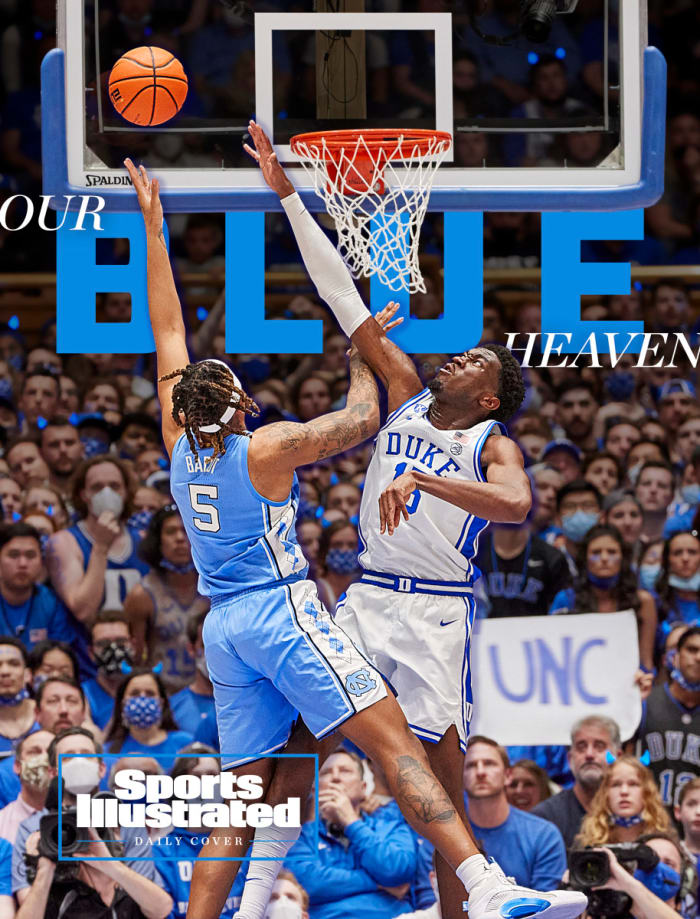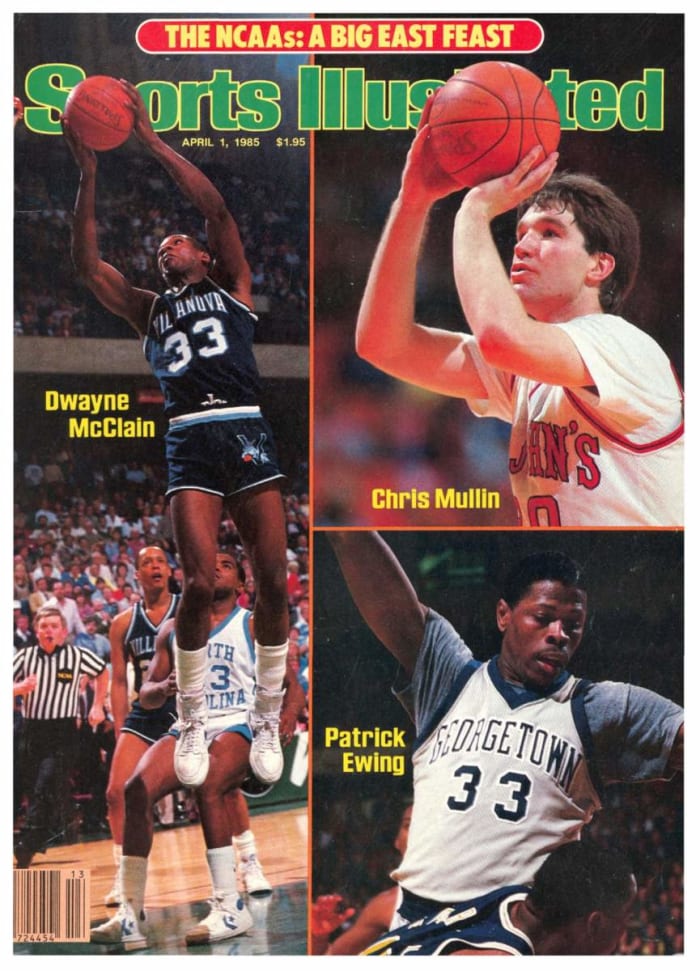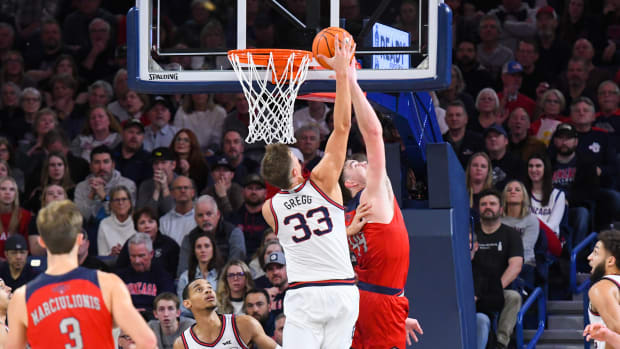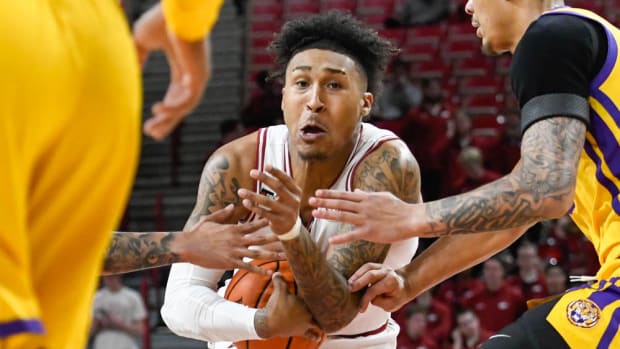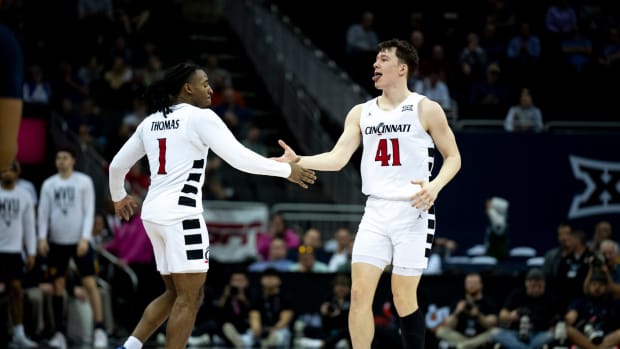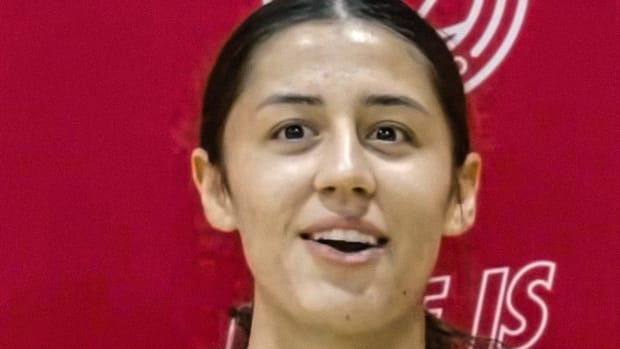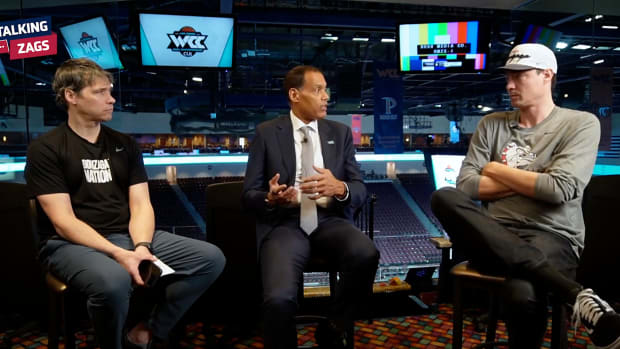SI:AM | The NCAA Tournaments Are Poised for a Grand Finale
Good morning, I’m Dan Gartland. Are you as ready as I am for a huge weekend of sports?
If you’re reading this on SI.com, you can sign up to get this free newsletter in your inbox each weekday at SI.com/newsletters.
It all comes down to this
Final Four weekend is always bittersweet for me. While the games are often fantastic, it’s a bummer to have three weeks of thrilling college hoops come to an end. But on paper, this year’s men’s and women’s Final Fours look like they’ll more than make up for any disappointment over the tournaments being over.
Let’s start with the women, because those games tip off tonight. Here’s the schedule:
- No. 1 Louisville vs. No. 1 South Carolina (7 p.m. ET, ESPN)
- No. 1 Stanford vs. No. 2 UConn (9:30 p.m. ET, ESPN)
“If you were tasked with designing a Final Four to bring together the history, present and future of the women’s game, you’d be hard-pressed to pick anything better than this,” Emma Baccellieri writes.
You’ve got two of the sport’s historically best programs (UConn and Stanford) and two coaches who have built new powerhouse programs (South Carolina’s Dawn Staley and Louisville’s Jeff Walz).
“In other words, one game will showcase two of the most iconic programs in the history of the sport, while the other will showcase two of the most compelling for the future—and the four teams collectively show off the best of the game right now,” Baccellieri adds.
These are four closely matched teams, but Ben Pickman has managed to rank them from best to worst.
Just like on the women’s side, the men’s Final Four features a quartet of the game’s top teams. Here’s the schedule for tomorrow night:
- No. 1 Kansas vs. No. 2 Villanova (6:09 p.m. ET, TBS)
- No. 2 Duke vs. No. 8 North Carolina (8:49 p.m. ET, TBS)
All eyes are on that titanic Blue Devils–Tar Heels clash, understandably. It’s the sport’s two biggest rivals’ first NCAA tournament meeting. It comes in the Final Four. It’s potentially the final game for one school’s legendary coach. It comes weeks after the other team, led by a first-year coach, ruined the aforementioned legend’s home court sendoff. If it was a movie script, it’d be dismissed as too melodramatic. But that’s exactly what we have in the second game of the doubleheader. After it’s all said and done, how will tomorrow night’s game stack up against Pat Forde’s ranking of the best games of the Duke-UNC rivalry?
It’s easy to overlook the other semifinal in the shadow of the Tobacco Road rivalry, but there’s plenty to be excited about in Kansas vs. Villanova. For one thing, a Wildcats win would be enormous for the program’s reputation. The other three teams in the Final Four are some of the most storied in the sport, while Jay Wright’s program is nouveau riche. Winning another national title, a third in six NCAA tournaments, would be a statement that Villanova deserves to be regarded as one of the sport’s true elites.
And how has Wright built a program of that stature? By producing some of the game’s great guards, Greg Bishop writes. This year, Villanova is led by Collin Gillespie, the latest in a long line of fantastic Wildcats floor generals. Gillespie is also part of a larger trend: super seniors taking advantage of the extra year of eligibility afforded to them by the pandemic, as Kevin Sweeney points out.
No matter who advances out of the semifinals to the women’s championship game Sunday and the men’s Monday, it’s shaping up to be an amazing four days of basketball.
The best of Sports Illustrated
Today’s Daily Cover, written by Pat Forde, is all about that looming Duke-Carolina game:
“As spellbinding as the Atlantic Coast Conference clashes have been between Duke and Carolina over the decades, this game offers next-level stakes. One has never ended the other’s season when there were legitimate national title hopes on the line. Even beyond the Coach K subplot to end all subplots, this is huge.”
Kevin Sweeney has the biggest question for each team in the men’s Final Four. … Here are Conor Orr’s NFL power rankings after the bulk of free agents have signed. … Even before Giannis Antetokounmpo’s big game last night, Rohan Nadkarni was arguing that it’s time to stop overlooking the Bucks.
Around the Sports World
Giannis broke Kareem Abdul-Jabbar’s Bucks scoring record and hit a clutch three to force overtime in Milwaukee’s win over the Nets. … Antonio Brown needs ankle surgery but says he won’t get the operation unless a team agrees to sign him first. … Terrell Owens is going to play on Johnny Manziel’s team in the Fan Controlled Football league. … It might be too late to save the Lakers’ season, but LeBron James and Anthony Davis are reportedly aiming to return tonight. … Manu Ginóbili and Swin Cash are reportedly among those who will be inducted into the Basketball Hall of Fame this year. … Jerry Jones has paid more than $3 million to the woman who filed a paternity suit against him, his lawyer says. … Xavier won the men’s NIT championship with a bucket in the final seconds. … Longtime Houston Chronicle sportswriter John McClain is retiring after 47 years with the paper.
The top five...
… reasons to watch WrestleMania this weekend:
5. It’s spread out over two nights, so you don’t have to endure a seven-hour marathon of wrestling as in years past
4. Pat McAfee has a singles match and he’s surprisingly talented in the ring
3. Becky Lynch and Bianca Belair are two of the best in the business and have built a great story line around their title match
2. Cody Rhodes, one of the founders of WWE’s primary competitor, AEW, is expected to make his WWE return against Seth Rollins
1. To see whether “Stone Cold” Steve Austin ends up having a full match against Kevin Owens
SIQ
On this day in 1969, which MLB team traded Lou Piniella to the Royals, jump-starting his previously floundering baseball career?
Yesterday’s SIQ: Which current Supreme Court justice (then a federal district judge) issued a ruling on March 31, 1995, that effectively ended the MLB strike?
Answer: Sonia Sotomayor, who was at the time a 40-year-old judge for the Southern District of New York.
The story of how Sotomayor came to play such an important role in the strike is long and somewhat dull (unless you’re a big fan of labor law). Scott Allen of The Washington Post recounted the whole story in December when the recent MLB lockout began, if you’d like all the details.
The gist of it is this: After a long winter of contentious negotiations between the league and the union (mostly centered on the implementation of a salary cap), owners were prepared to open the 1995 season with replacement players. The union then asked the National Labor Relations Board to seek a court order that would allow the upcoming season to be played under the terms of the previous collective bargaining agreement. The NLRB voted in favor of the union, 3–2, and the case went to court, where Sotomayor was selected at random to preside.
On March 31, 1995, she heard arguments from both sides before ruling in favor of the union, agreeing with the NLRB that the owners’ actions were unfair labor practices. The timing of the ruling averted an Opening Day with replacement players, allowing MLB to play a shortened 144-game season with union players beginning in late April.
When former President Barack Obama nominated Sotomayor for a position on the Supreme Court in 2009, he said, “Some say that Judge Sotomayor saved baseball.” That’s an exaggeration, but her ruling did change the tenor of negotiations, though the two sides wouldn’t agree to a new CBA until late November 1996.
From the Vault: April 1, 1985
I’m going to take a closer look at Villanova’s 1985 national championship in a future newsletter so for now I just want to focus on the Big East’s outstanding ’84–85 season.
Incredibly, the Big East sent six of its nine teams to the NCAA tournament that year. In addition to the three Final Four teams in the image above, Syracuse, Boston College and Pittsburgh also earned bids. Of those teams, only No. 11 seed BC advanced past the first weekend, upsetting Texas Tech in the first round and Duke in the second round to advance to the Sweet 16. The Eagles might have made it an all–Big East Final Four had they not lost to Memphis State in the Sweet 16 after a late turnover.
The other three teams more than made up for that lack of tournament success. No conference had gotten three of the national semifinalists before and none has since. Top seeds Georgetown (led by Patrick Ewing) and St. John’s (led by Chris Mullin) were expected to be there. No. 8 seed Villanova was not, but the Wildcats were hardened by a tough Big East schedule and beat some big programs on their way to the title game.
Not only was this the only Final Four to feature three teams from the same conference, it was one of just two to feature three private schools. (LaSalle, Bradley and USC reached the national semifinals in 1954.)
“What has happened to turn our so-called national tournament into a parochial festival?” Curry Kirkpatrick wrote. “Well, relax. Remember, Georgetown and St. John's were the favorites to win the East and West Regional anyway. And just because Rollie Massimino coached his ample tail off so that his veteran Villanova crew—third place in the Big East—could win the Southeast doesn't mean a dynasty is brewing up in the mean-streets megalopolis.”
Check out more of SI’s archives and historic images at vault.si.com.
